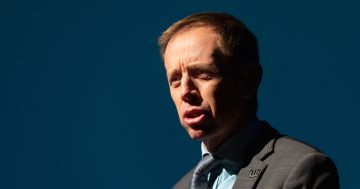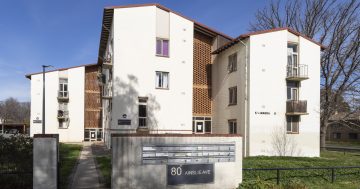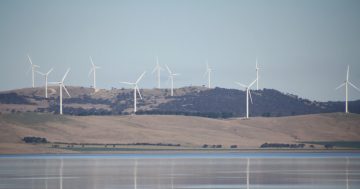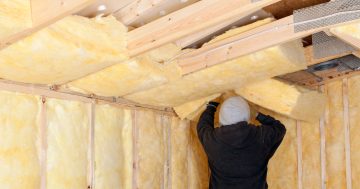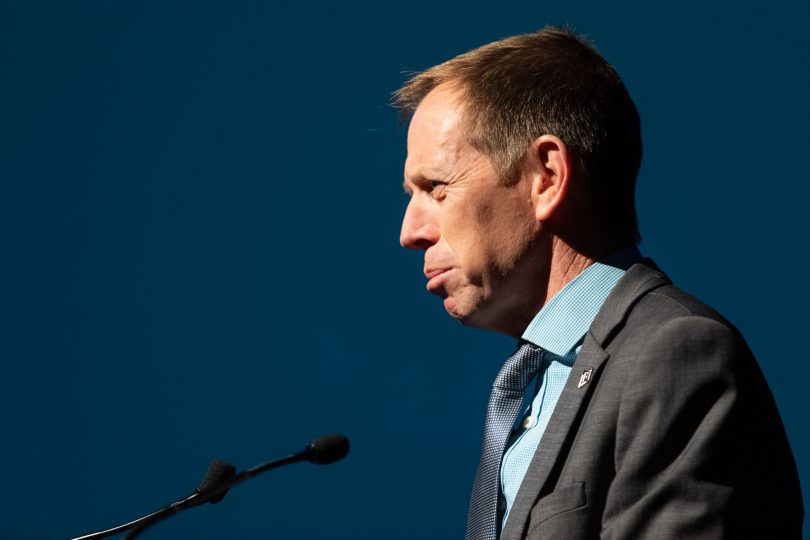
Shane Rattenbury MLA says the ACT Government is striving towards its goal of being a net-zero jurisdiction by 2045. Photo: Michelle Kroll.
For years, the ACT Government has led the nation in taking action on climate change because this community has made it loud and clear about wanting a healthy planet where all species, including the people we love, can thrive.
Most people want a healthy planet because even if pollution didn’t come with an existential threat, why wouldn’t you want the best for the planet on which you live?
However, there are people who are still deterred by the perceived cost of shifting to a sustainable economy and way of life.
For these people, we need to put in dollar terms the cost of inaction on climate change, and the ACT Government is about to become the first Australian jurisdiction to do so.
Economists call it ‘the social cost of carbon’, a comprehensive estimate of climate change damages resulting from the release of one tonne of greenhouse gas emissions into the atmosphere. Damages include things such as future healthcare costs, property damage from extreme weather, and lost productivity.
By understanding the financial impact of carbon pollution on our community, we are incentivised to choose the least emitting options and we become fully alert to the impact each investment will have on the wellbeing of our community.
We need a social cost of carbon in place to meet our emissions reduction targets. While people around Australia are crying out for the Federal Government to commit to responsible targets, the ACT has already legislated them.
To protect our community, we will be a net-zero jurisdiction by 2045, and to get there we already cut emissions by more than 40 per cent by 2020, with our next checkpoint being 50-60 per cent by 2025.
Our targets require significant investment by the ACT Government in emissions reduction programs and policies. We’re already powering the ACT with 100 per cent renewable electricity, and cutting transport emissions by shifting both our fleet of government vehicles and our public transport buses to electric.
Knowing the social cost of carbon in the ACT will help us take the next steps.
There are various benefits to knowing what the social cost of carbon is. It is a powerful tool that can be used to support more informed decision making and public investment to help governments steer away from being drivers of climate change.
If we know how much damage in dollar terms each tonne of greenhouse gas emissions will create, we can start to consider alternative investment and policy options to reduce emissions and avoid causing costly climate change harms.
Drawing on international and domestic peer-reviewed literature to understand the key theory and practice behind the social cost of carbon, we will be able to adopt an appropriate social cost of carbon for the ACT and understand when and how adjustments will be needed in the future.
How will this apply in practice?
Essentially, the ACT Government will measure the amount of greenhouse gases for which it is responsible and ‘bill’ itself for the cost of these emissions. The equivalent money will be invested in activities to reduce the emissions, preventing the recurrence of these costs in the future.
In the upcoming ACT Budget, we’ve set down a starting price of $20 per tonne. Based on the emissions of current government operations, this will see millions of dollars invested in initiatives to cut those emissions, including school heating systems that don’t create any emissions, and moving to zero-emission vehicles.
The earlier we make these investments the better because the decisions we make today will impact our ability to reach net zero by 2045.
We expect the ACT’s price will increase over time as the government fully implements the concept of the social cost of carbon, and as the costs of causing climate change increase.
Even small steps, such as putting in place an interim social cost of carbon, will help our government make better decisions for the wellbeing of this community.
Shane Rattenbury MLA is the member for Kurrajong; leader of the ACT Greens; ACT Attorney General; ACT Minister for Water, Energy and Emissions Reduction.












